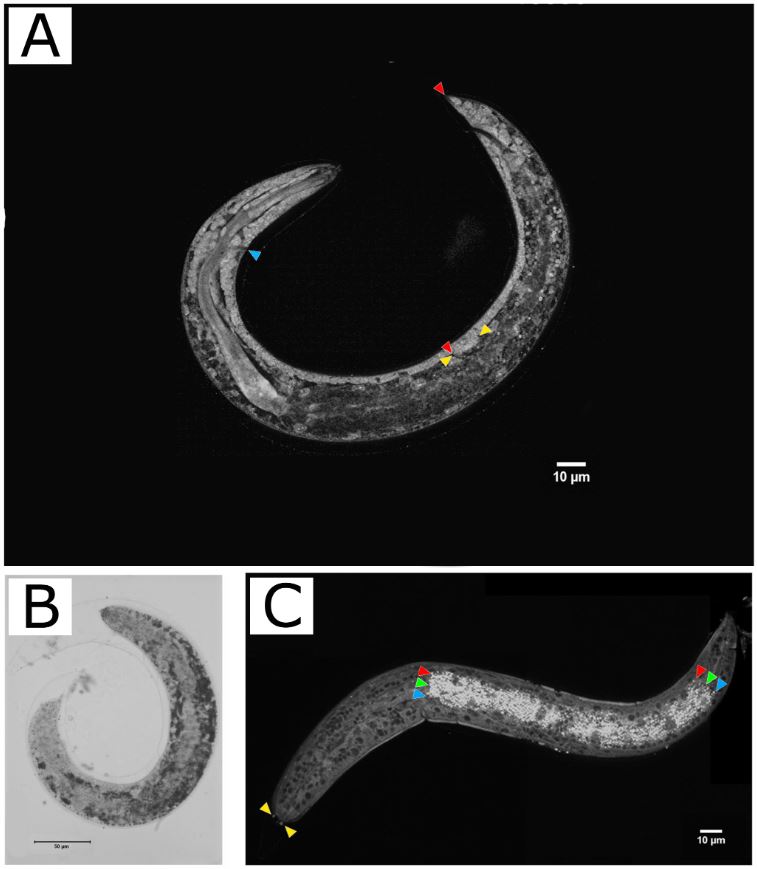Abstract
Angiostrongylus vasorum is a pulmonary artery parasite of domestic and wild canid. On molluscs, intermediate host, first stage larvae (L1) are found after the first day of infection, in the 8th L2 and in the 30 th L3. It was evaluated L1, L2 and L3 recovered by Baermann technique from Achatina fulica infected with 1000 L1. Fifty larvae/stage were incubated with antibodies anti-β-tubulin, anti-α-tubulin, anti- α-actin, anti-β-actin and anti-collagen, and then with Alexa 633. Fifty larvae/stage were observed with picrosirius red and Oil Red O. It was also observed in the anterior region of L1 the beginning of the chitinous stems development, in the initial portion of the intestine and genital primordium. In L2 anterior region, the papillae, chitinous canes juxtaposed to the mouth and intestines bigger than L1. The L3 musculature is well defined, next to the chitinous stems, there are two round distally arranged from each other. It was observed the whole extension of the intestine genital primordium and intense cellularity in the L3 distal portion. With the picrosirius red the L1, L2 and L3 musculature could be observed, as the nerve ganglia on L3. Oil Red O revealed that L1, L2 and L3 store energy on lipid droplets.
Keywords:
Angiostrongylus vasorum; Achatina fulica; morphology; antibodies; picrosirius red; Oil Red O

 Thumbnail
Thumbnail
 Thumbnail
Thumbnail
 Thumbnail
Thumbnail
 Thumbnail
Thumbnail
 Thumbnail
Thumbnail
 Thumbnail
Thumbnail





